![]() (READ: Part 1: Choosing for 2016: Kapitan, lingkod, katiwala)
(READ: Part 1: Choosing for 2016: Kapitan, lingkod, katiwala)
For the 2010 elections, the Movement for Good Governance, a coalition of individuals and organizations led by Winnie Monsod and Nene Guevarra, developed criteria for making our electoral choices.
I think that MGG’s 3 qualities of a leader combine best the leader that Lowney, Dela Costa, and Greenleaf describes. These pillars are: (1) the effective leader (kapitan ng bayan); (2) the empowering leader (lingkod ng bayan); and (3) the ethical leader (katiwala ng bayan).
The effective leader
We must elect visionary, competent and effective leaders in 2016. We cannot afford to have leaders who do not know where to bring us, or will bring us to the wrong place, or not bring us anywhere at all. Our leaders must be physically, intellectually, and morally fit for the positions they are aspiring for.
The description the MGG uses for the effective leader is that of a Kapitan ng Bayan. As former Fidel V. Ramos frequently says, we must see ourselves as Team Philippines and the president as the captain who will steer us to the right direction.
An effective leader has a clear and comprehensive platform of government; has consistent and clear positions on key issues; must work hard and be smart; must demonstrate political will, have the ability to take risks, and the courage to implement reforms.
Concretely, to be visionary means having a solid understanding of the challenges before us: poverty, lack of jobs, war in Mindanao and internal conflict in other areas, inequity in taxation that unduly burdens the poor and the middle class, and climate change and disaster. These are among the most important.
More specifically for the presidency, I would like a leader who will prioritize programs for the poor, continue educational reforms that will position young people in better jobs, support tax reforms that will reduce burdens for the poor and the middle class, while making sure the rich pay their just share.
That leader must complete the peace process with the communist insurgency and all Moro revolutionary organizations (passing a good Bangsamoro Basic Law that is both constitutionally compliant and meeting the aspirations of our Moro brothers and sisters).
The same leader must have a coherent and smart strategy for our OFWs, make sure that mitigation and adaptation programs on climate change are adopted and implemented, and push for the creation of an independent disaster agency.
An effective leader has a clear and comprehensive platform of government; has consistent and clear positions on key issues; must work hard and be smart
In a more personal way, as a resident of Metro Manila and as an academic and lawyer, I will vote only for a leader, who I am convinced, can solve the problem of lack of mobility and connectivity that plagues the capital of our metropolis. This is not for selfish reasons but are major reasons why we are and will be uncompetitive.
Thus, it is fair to ask whether Mar Roxas has some responsibility for the dismal state of transportation and communication in the Philippines, given that he was head of these portfolios in the early years of the Aquino administration.
But Roxas’ record must be comprehensively assessed – from his experience as a legislator (what bills did he author) to his cabinet stint as trade and industry secretary and later, interior and local government secretary.
It is also appropriate to look at the local government records of Binay and Duterte. How is Makati now after decades under the control of the Binays? How is Davao faring under Duterte’s leadership?
For Santiago, she has her record in the Senate, and before that, in the cabinet as agrarian reform secretary and immigration chief, to speak for her. And of course, she also left a mark in the judiciary.
While I have a lot of respect for Senator Miriam Defensor Santiago, it is important to have up to date information about her health before voting for or against her. Among others, we must know how she will manage the physical demands of the presidential office and whether she will last the full term of 6 years. For the record, I do want her to be in the pink of health and to survive many more years beyond the term of the next president.
It is more challenging with respect to Grace Poe because of her shorter record of public service. We have of course her MTCRB and Senate stints to look at to see her style of leadership.
In addition to their record of service, it is important to look at how the candidates are handling themselves in the campaign. Presidential campaigns are grueling and challenging, beset by crises. The behavior of the candidates – their fortitude, determination, discipline, ability to communicate, etc – is a good way of assessing their effectiveness as leaders.
An empowering leader is one who builds institutions. Unfortunately, many of our governance institutions are in bad shape.
The resilience of Binay before unrelenting attacks against his character is, in my view, a plus for him. If he wins in the elections, it will be because he is the candidate who consistently reached out to the grassroots, pressing the flesh, embracing babies, showing the voters he cared for them.
Duterte stumbled early in the campaign with his cursing of the Pope and other excesses. But lately, he has recalibrated and has promised that he will be a president we can be proud of.
I was actually taken aback by his earlier behavior and his rhetoric; those who have talked to Duterte and seen him up close will see right away that he is not a threatening figure. We will have to see how consistent he will be with this new posture and how that will be reconciled with the “punisher” image that was spread earlier.
Like Binay, Poe has not been rattled by the disqualification cases filed against her. She has continued to campaign in the regions, speaking out about the issues. No crisis is big enough to deter her or push her to panic mode. This clean campaign, focused on what matters to the country, is being appreciated by the voters.
The Roxas strategy is to bring the candidate as near to the people as possible. Even the reactions to Duterte are influenced by this strategy. Certainly, Roxas has been able to link successfully to local politicians and has set up, together with Binay, a formidable machinery at the local level.
It's difficult to assess Santiago’s conduct in the campaign as she is running essentially a virtual campaign, visible in traditional and social media, but without sorties that are expected in election campaigns.
![]()
The empowering leader
We must elect leaders who have proven records of service to people, who show in their records and campaigns empathy for the concerns of the ordinary people, and who can recruit and bring into government the best and the brightest.
The empowering leader is participative and inspiring. He or she is a good listener and understands the concerns and shares the values of the ordinary Filipino. Such a leader knows and appreciates Philippine culture and thus is able to communicate well to all Filipinos.
The MGG description of the empowering leader is one who is a Lingkod ng Bayan. Will we be the bosses of this leader? Will she or he listen to us? Will he or she bring out the best in us, and by example, unify the country?
In terms of platform, the empowering leader will promote social justice and prioritize the basic needs of the people (food, health, education, shelter) and will go out of his or her way to protect the interests of marginalized sectors of our society (workers, farmer, women, indigenous people, people with disabilities).
Specifically, I would like a leader who will fully implement agrarian reform, prohibit contractualization of labor, stop the killings of Lumad, and respect indigenous peoples’ rights.
An empowering leader is one who builds institutions. Unfortunately, many of our governance institutions are in bad shape. Some good happens when the right leaders are at their helm but that is never assured.
I would like to see a leader who consciously reforms our institutions and leaves power with them much improved and refreshed with people who are capable and committed to their mission.
The leaders we elect in 2016 must have unquestionable moral character and fiber. They must have no conflict of interest and when elected, act consistently with integrity and be beyond reproach.
Finally, I would like a leader who is able to unify the people, one who has a compelling vision, and who inspires hope and enables us to work with each other for a common purpose.
How do I apply this criterion to those who have declared their candidacies for president? Again, the record of service – this time of empathy and ability to inspire – is important.
But how they are campaigning now provides critical data to assess whether the candidate is an empowering leader. Is the campaign of that candidate too negative, condescending, disrespectful, and angry? Or does that candidate make us feel good about ourselves and about our country? Is the vision he or she proposing inclusive, unifying and engaging?
Applied to the candidates, this criterion could be used to evaluate Poe. On one hand, she is able to communicate very well with voters and especially with millennials. She certainly has charisma, both because of her parental legacy as well as in her own right.
Binay also blends in well with political leaders and voters. He never tires of shaking hands, embracing babies, and meeting ordinary people. But his style illustrates what we call traditional politics, a patron-client approach to politics.
Roxas admits that he can be perceived to be snobbish, elitist. Voters will have to judge whether he has empathy and whether he gets what they need and how they see things.
Duterte and Santiago have strong appeal to their followers. They are certainly charismatic and can move many to action. At the same time, both these candidates have strong personalities that do not seem to give room for serious listening and feedback.
The ethical leader
The leaders we elect in 2016 must have unquestionable moral character and fiber. They must have no conflict of interest and when elected, act consistently with integrity and be beyond reproach. They must show personal and family compliance with the country’s laws and rules and must have the ability to sacrifice personal, familial, and other vested interests.
The leaders we want must also advocate and practice meritocracy in government. We need to be assured they will prosecute and punish offenders.
For the presidential candidates, the leader we should choose must commit to the immediate enactment of the Freedom of Information Act, including issuing an executive order as one of his or her first acts.
I expect the candidate I will support to commit to appoint competent and trustworthy Supreme Court Justices (10 of them will be appointed by the next president) and an Ombudsman with similar qualities of competence, integrity and courage as Ombudsman Conchita Carpio Morales (whose term will expire in 2018).
MGG describes this leader as the Katiwala ng Bayan. Can we entrust this leader with public funds and resources? Will this leader be a good steward of such funds and resources? Will he or she appoint people who will be as trustworthy and accountable?
One application of this criterion is whether or not Binay, given all the corruption charges against him and his family, is an ethical leader. He has not been convicted, of course, and should be presumed innocent from a criminal law perspective. In my view however, we have enough evidence to decide politically whether or not VP Binay is worthy of our trust and our vote.
There are no serious personal integrity issues that can be raised against Roxas, Poe, Duterte and Santiago. However, some have questioned whether the Araneta family will be advantaged by a Roxas victory, whether Poe’s former renunciation of her citizenship does not speak well of her patriotism, whether Duterte’s human rights record and rhetoric disqualifies him for the presidency, and whether Santiago’s alliance with Bongbong Marcos stains her candidacy.
Conclusion: leadership for the future
The Philippines is a country in perpetual crisis. To quote from the Italian Marxian philosopher, Antonio Gramsci, in our country, “The old is dying but the new cannot be born."
The last 5 years under the Aquino government have been good in many ways. Certainly from a macro-economic point of view, it is hard to dispute the progress that has been made as seen in the credit ratings upgrades we have been getting.
We must stop the leakage; put an end to drift; find a direction, and steer. – Horacio dela Costa, SJ
The anti-corruption campaign has also had some success with the Ombudsman filing a record number of cases, including very powerful political figures. Budget, social welfare, and educational reforms are in full swing and they augur well for the future. We are in better shape now in disaster preparation than we were in 2013 when Haiyan/Yolanda devastated the Visayas.
But not all is good. Metro Manila is certainly in shambles, with citizen mobility paralyzed by bad decisions related to public transportation. Our airports and seaports are congested and that is having an economic impact. Internet connectivity is bad in many places, slow where they are available.
Development has not been inclusive, and workers, farmers, and indigenous peoples, to count a few, continue to be marginalized. Corruption continues to prevail at many levels of government, including apparently in our main international airport. And the state of human rights, as we have seen in the Lumad killings and other extrajudicial murders, is dismal.
Finally, there is uncertainly whether we will have honest and credible elections. Many questions have been raised against the automation technology we have adopted.
I have trust in Comelec Chair Andres Bautista but we must be vigilant. In a close election, the outcome might not be accepted by the people. It will not be the first time when elections in our country divide and not unify the country.
As we participate in the elections, we should not be ruled by fear. Our choices are imperfect: all of them have strengths and weaknesses. Personally, I can live with whoever among the 5 wins in May.
Contrary to what some think of particular candidates, I do not think any one of them will be a major disaster as long as citizens are vigilant. If the 2016 elections are honest and credible, I will support and work with the winner.
Fr Dela Costa once pointed out that democracy would survive in our country only if people have confidence in the ability of democratic government to reform itself.
According to him: "They will lose confidence, they will lose hope, not only in their government but in themselves if our ship of state continues to be, in the words of T.S. Eliot, 'a drifting boat with a slow leakage'. He ended that speech with these classic words: 'We must stop the leakage; put an end to drift; find a direction, and steer.'"
I repeat what I frequently emphasize in commencement speeches I deliver: Stopping the leakage; putting an end to drift; finding a direction; steering: We need leadership for this. Not just by the next president or a few elite politicians, but by many others across the many islands of our country. Only then, as Dela Costa wrote, can we solve what is perhaps our most critical challenge we must overcome: the restoration of hope.– Rappler.com
![]()
 Reports of deaths and damages from the two most recent typhoons (Onyok and Nona) that devastated the Philippines have raised the urgency of understanding how the new global climate agreement can particularly help Filipinos address disasters. We have noted how typhoons seemed to have always marked the UN climate change negotiations, with super typhoon Yolanda, one of the strongest storms to make landfall in history, hitting the country in 2013 while the climate change talks were happening then in Warsaw, Poland. In 2014, the negotiations transpired while typhoon Ruby was also battering Manila; thankfully, there were fewer casualties then, but one life lost is one too many.
Reports of deaths and damages from the two most recent typhoons (Onyok and Nona) that devastated the Philippines have raised the urgency of understanding how the new global climate agreement can particularly help Filipinos address disasters. We have noted how typhoons seemed to have always marked the UN climate change negotiations, with super typhoon Yolanda, one of the strongest storms to make landfall in history, hitting the country in 2013 while the climate change talks were happening then in Warsaw, Poland. In 2014, the negotiations transpired while typhoon Ruby was also battering Manila; thankfully, there were fewer casualties then, but one life lost is one too many. 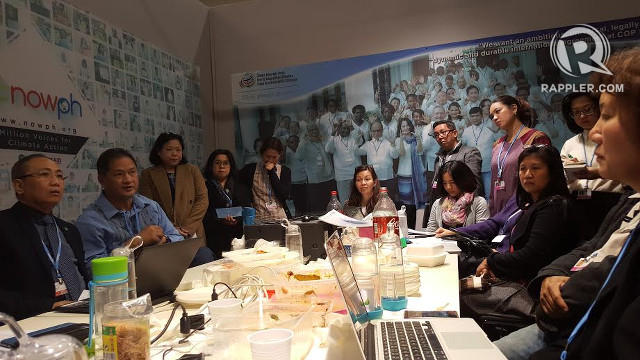
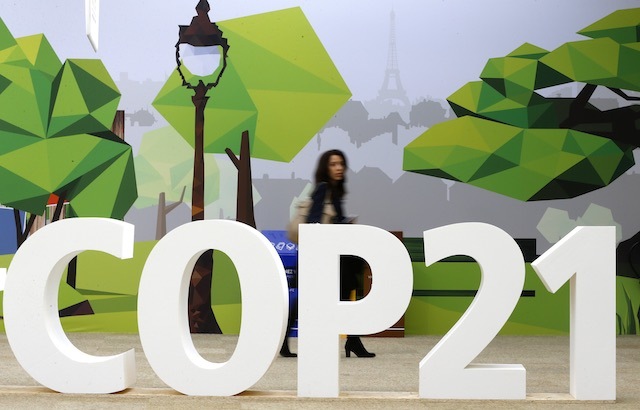
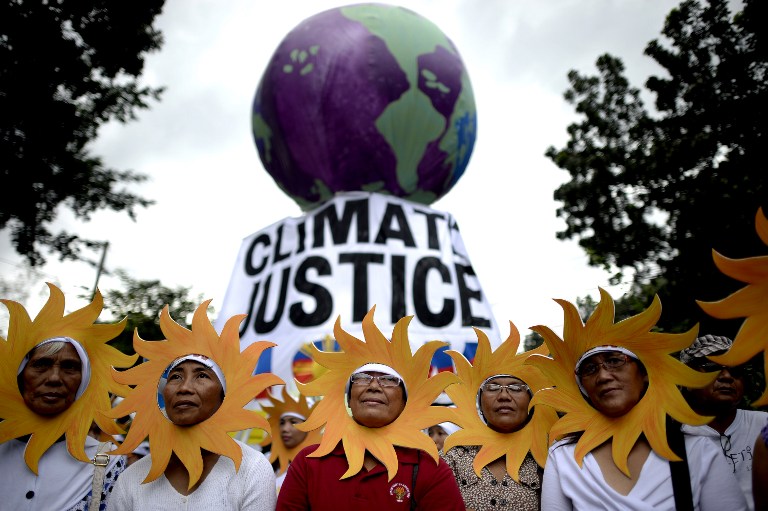
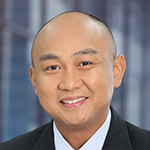


 Just 5 kilometers away from the Syrian border is the busy Ar Ramtha hospital in Jordan where Médecins Sans Frontières (Doctors Without Borders/MSF) runs an emergency surgical department. The patients treated by MSF’s teams are often in a very critical condition, with the team frequently seeing people injured by the war in Syria, soon to enter its 6th year.
Just 5 kilometers away from the Syrian border is the busy Ar Ramtha hospital in Jordan where Médecins Sans Frontières (Doctors Without Borders/MSF) runs an emergency surgical department. The patients treated by MSF’s teams are often in a very critical condition, with the team frequently seeing people injured by the war in Syria, soon to enter its 6th year. 
 In arguing against a Jejomar Binay presidency for the next 6 years, critics of the incumbent
In arguing against a Jejomar Binay presidency for the next 6 years, critics of the incumbent 
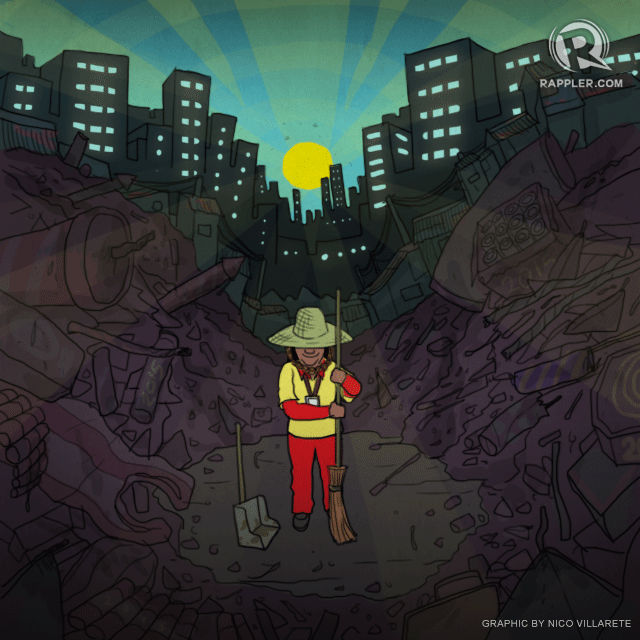

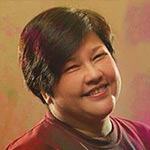
 An indigenous women’s group is calling for a review and repeal of local public health ordinances that prohibit and penalize home births.
An indigenous women’s group is calling for a review and repeal of local public health ordinances that prohibit and penalize home births.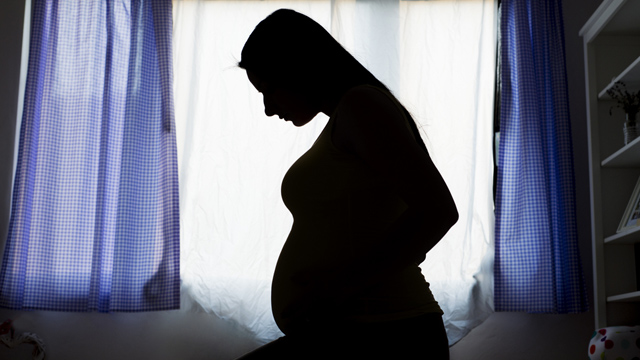
 It seems strange to start the New Year with an article about death and grief. But when those deaths are meaningful because of the lives that were led and when the people who loved them grieved and carried their loss with such dignity and love, surely there is something to celebrate there.
It seems strange to start the New Year with an article about death and grief. But when those deaths are meaningful because of the lives that were led and when the people who loved them grieved and carried their loss with such dignity and love, surely there is something to celebrate there.









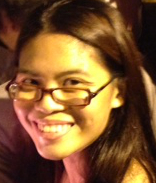 In one of the far flung islands of Sulu live Bibing Antula, her husband and 5 children. For years, going to the town center in another island has been a perilous journey.
In one of the far flung islands of Sulu live Bibing Antula, her husband and 5 children. For years, going to the town center in another island has been a perilous journey.

 She slips into her heels, draped in pearls and cashmere cardigans. She smiles through kitchen windows with a hot, oven-fresh casserole on hand. She will invite you for brunch, or afternoon tea, but never for sound political debates. She will giggle over cute boys and whisper judgment over scantily clad girls but by 5pm sharp, and not a minute later, she will come home to her famished husband just in time to prepare dinner.
She slips into her heels, draped in pearls and cashmere cardigans. She smiles through kitchen windows with a hot, oven-fresh casserole on hand. She will invite you for brunch, or afternoon tea, but never for sound political debates. She will giggle over cute boys and whisper judgment over scantily clad girls but by 5pm sharp, and not a minute later, she will come home to her famished husband just in time to prepare dinner.
